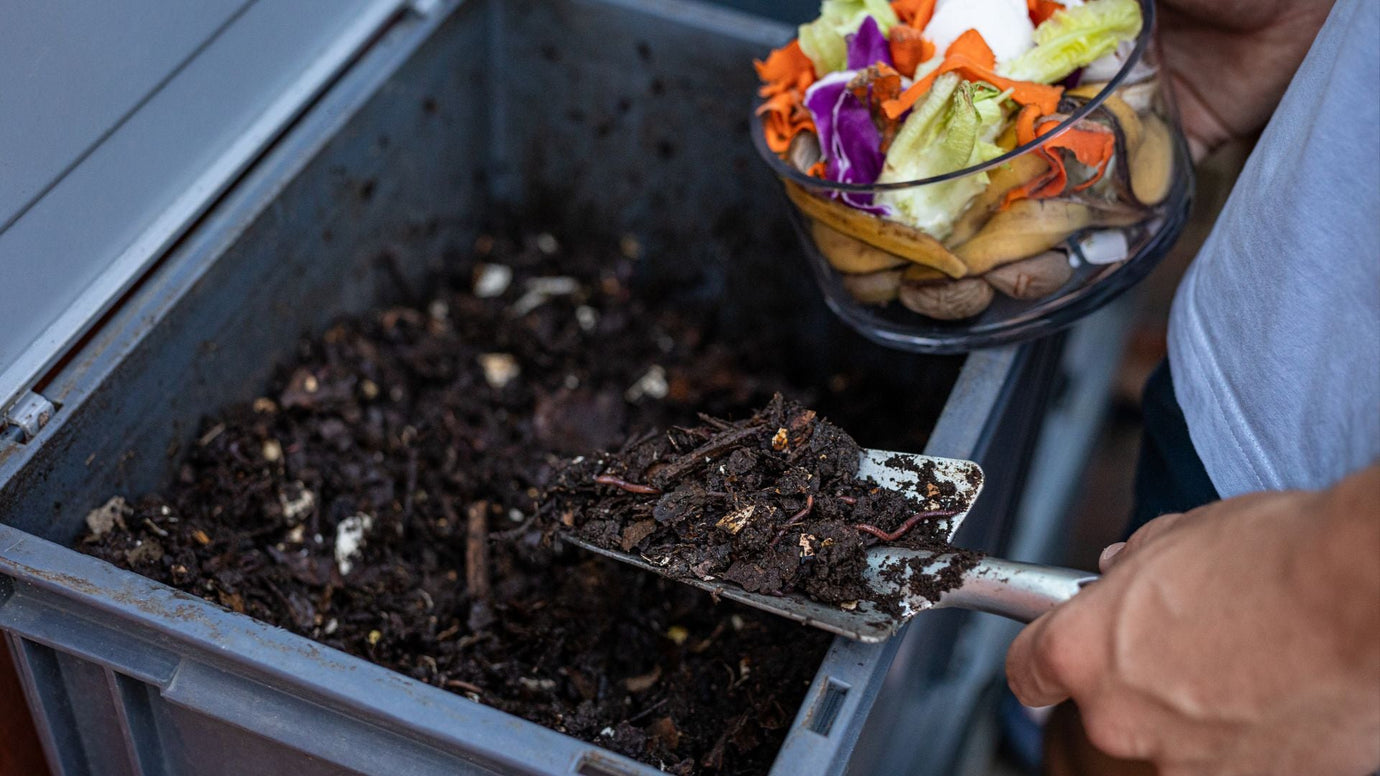10 Common Indoor Composting Mistakes and How to Avoid Them
Composting looks simple on the surface. You collect scraps, toss them in a pile, and hope they turn into something useful.
However, many people find the process discouraging once the pile starts to smell, takes months to decompose, or attracts unwanted pests. These problems are common and are usually caused by a few minor mistakes.
With the right system, indoor composting becomes clean, quick, and rewarding.
Let’s discuss some common indoor composting mistakes and how to avoid them.
The Case for Indoor Composting
Indoor composting works well for people who don’t have space for a backyard pile or who want a faster, cleaner way to handle food scraps. It’s especially practical for apartment living, small homes, or anyone trying to keep composting convenient. Modern systems control odors, reduce volume quickly, and produce nutrient-rich output that can feed houseplants or garden beds. If you cook regularly and want to cut down on waste, composting right in your kitchen is one of the easiest ways to make a real difference.
That said, many beginners run into avoidable problems when starting out. Here are the most common indoor composting mistakes, and how to keep them from getting in your way.
1. Tossing in the Wrong Scraps
Kitchen composting doesn’t mean everything goes in. Oils, meat, and dairy quickly create odors and can clog the breakdown process. Foil, wrappers, or plastics never decompose at all. Sticking to fruit peels, vegetable scraps, coffee grounds, and eggshells keeps compost clean and usable. A modern kitchen waste composter can make it even easier by guiding you on what belongs inside.
2. Forgetting the Balance of Ingredients
Indoor composting still relies on a mix of “greens” and “browns.” Too many food scraps turn into a wet mess, while too much paper or cardboard slows the process. Outdoor piles need to be turned to correct balance, but a compact system processes ingredients evenly without requiring you to measure or stir.

3. Ignoring Odors Until It’s Too Late
One of the biggest frustrations with indoor composting is smell. Leaving scraps too long without airflow leads to sour odors. The solution is a sealed system with carbon filters and aeration. Our Vego electric countertop composter effectively handles odors by maintaining optimal airflow and regulating decomposition, ensuring your kitchen remains fresh.
4. Waiting Too Long for Results
Patience runs out quickly when compost takes months to be ready. That’s fine for outdoor piles, but discouraging inside a kitchen. A modern electric countertop composter shortens the process dramatically. Instead of waiting weeks or months, you can have usable material in just a day.
5. Skipping Aeration
Even indoors, oxygen matters. Without it, compost breaks down poorly and produces foul smells. Stirring scraps by hand inside a small bin is messy and inconvenient. Smart indoor composters automatically aerate during the cycle, saving you from doing extra work.
6. Overstuffing the Container
It’s tempting to keep adding scraps until the bin overflows. Overfilling prevents even processing and leaves you with half-finished material. A smart system tracks how much waste is inside and signals when to run a cycle. That way, nothing sits too long, and composting keeps pace with your daily cooking.

7. Mismanaging Moisture
Too much moisture turns indoor compost into sludge; too little makes it dry and inactive. Managing that balance inside a small container is tricky. Controlled cycles regulate heat and moisture automatically, so you don’t need to adjust with water or guess when it’s right.
8. Attracting Fruit Flies
Open bins or poorly sealed containers often invite fruit flies into the kitchen. Once they arrive, they’re hard to get rid of. Indoor composters solve this by keeping scraps sealed tight while still breaking them down. In-bed composters placed directly in raised beds are another option, cycling nutrients underground instead of on open surfaces.
9. Treating Compost as Regular Trash
Indoor composting isn’t about mindlessly dumping scraps. It’s about producing something your plants can use. Different scraps can support different results. A modern food recycler with multiple modes can turn your kitchen waste into outputs suited for indoor plants, lawns, or garden beds, giving you more control over the end product.
10. Quitting Too Soon
The most common mistake is giving up after a few tries. Many people stop composting when smells, pests, or long wait times become discouraging. The right setup makes composting a daily habit, rather than a chore. Our Vego composter even connects to an app, letting you track progress and see results in real time, so you stay motivated to continue.
Making Kitchen Composting Easy from Day One
Starting composting indoors doesn’t have to feel overwhelming. The biggest challenges, including odors, pests, and long wait times, stem from using the wrong container or failing to maintain balance. A system designed for the kitchen solves those problems from the start.
Imagine finishing dinner, dropping scraps into your composter, and seeing nutrient-rich material ready for your plants the next day. Indoor composting becomes less about waiting and more about enjoying the results. With the right kitchen waste composter system, it’s one of the easiest ways to cut food waste and bring sustainability right into your home.






